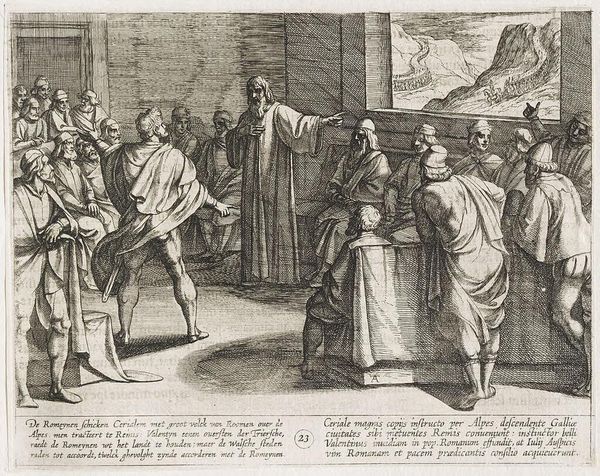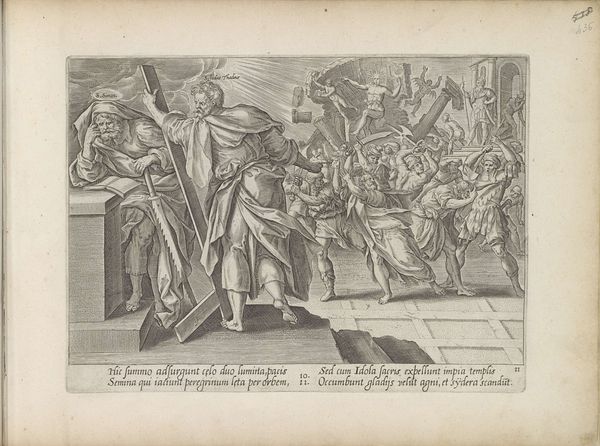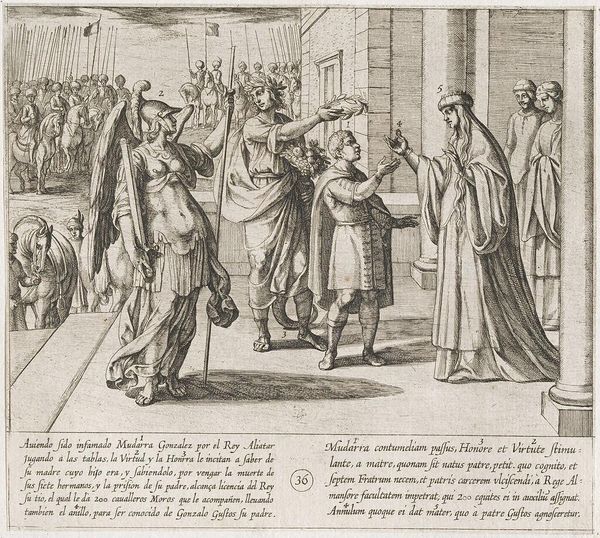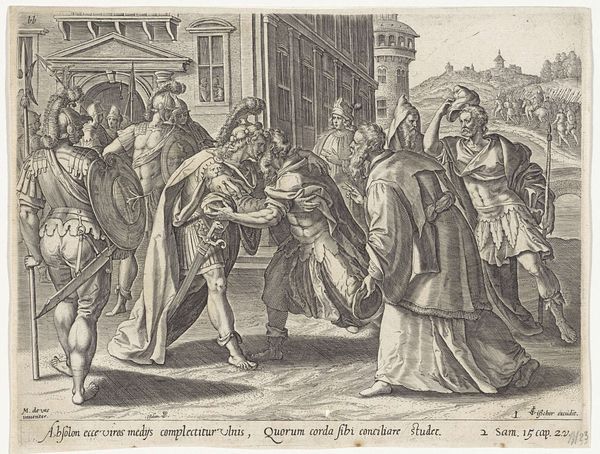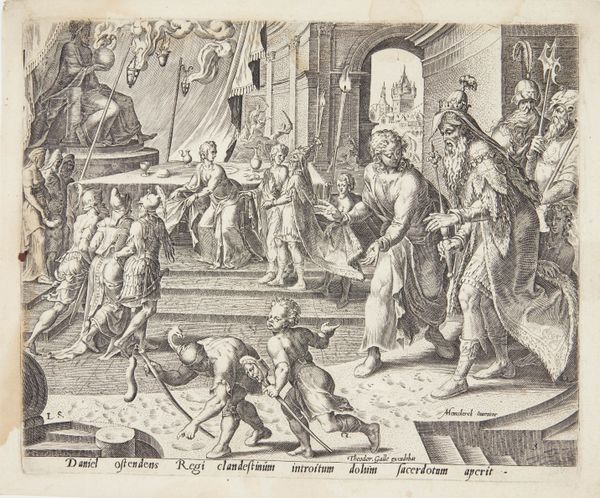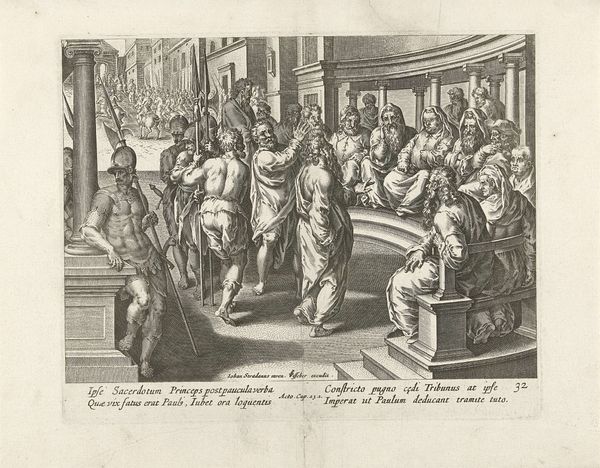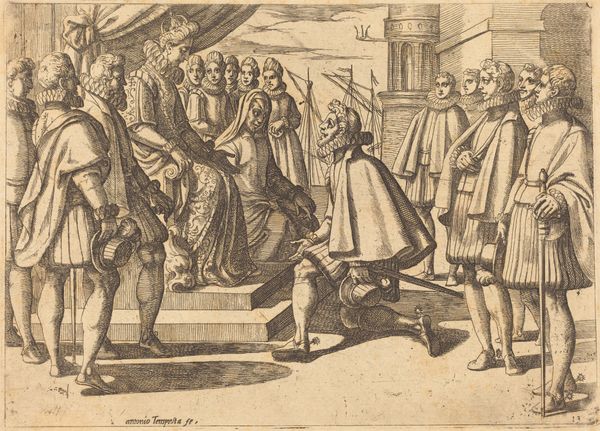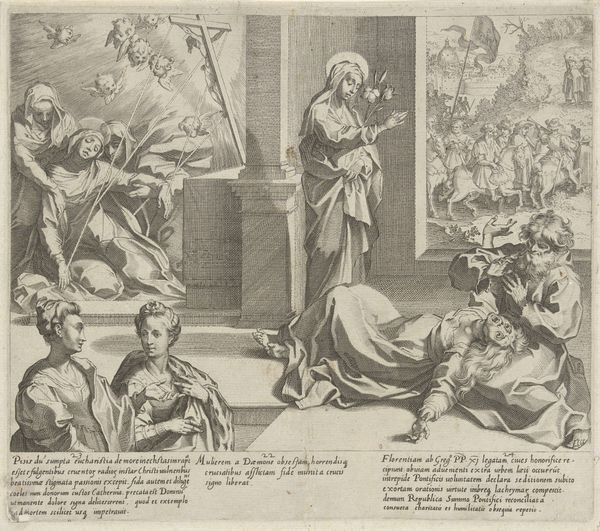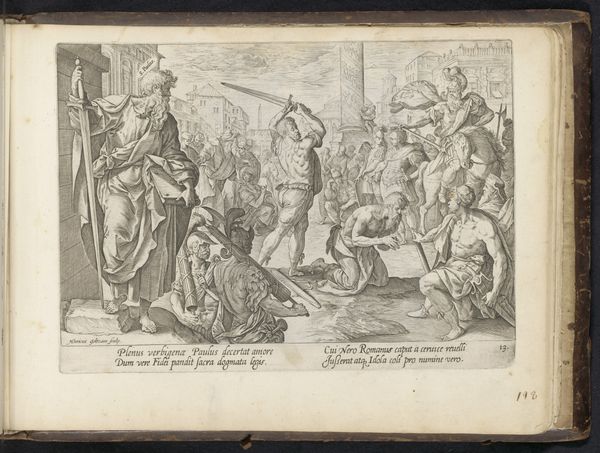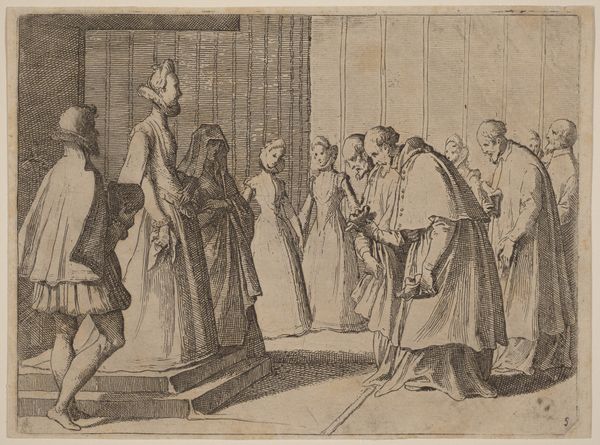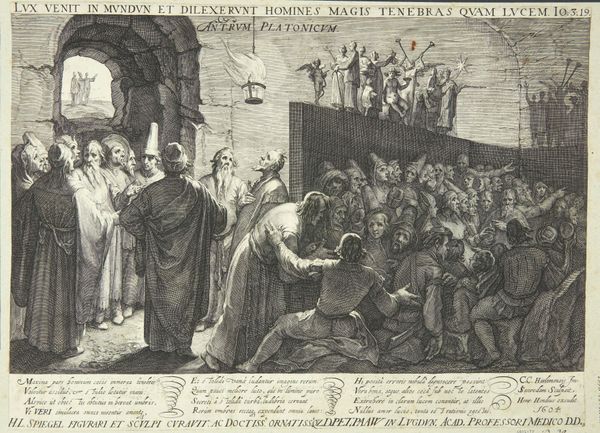
Plate 23: Conference on What Steps to Take Upon the Romans' New Troops Approaching Across the Alps, from The War of the Romans Against the Batavians (Romanorvm et Batavorvm societas) 1611 - 1612
0:00
0:00
drawing, print, etching, engraving
#
drawing
#
baroque
# print
#
etching
#
old engraving style
#
men
#
history-painting
#
engraving
Dimensions: Sheet: 6 3/8 × 8 1/4 in. (16.2 × 21 cm)
Copyright: Public Domain
Curator: This print, titled "Plate 23: Conference on What Steps to Take Upon the Romans' New Troops Approaching Across the Alps, from The War of the Romans Against the Batavians," was created by Antonio Tempesta around 1611 or 1612. It's currently housed at the Metropolitan Museum of Art. Editor: Immediately striking. The sheer number of figures tightly packed together creates a sense of urgency and perhaps even panic. The contrast between the active figure in the foreground and the seated council behind him is quite compelling. Curator: Tempesta, working in the Baroque style, used etching and engraving to illustrate this historical event. It depicts a conference deliberating on how to respond to the approaching Roman troops, as they cross the Alps. The landscape with the tiny army marching along seems intentionally diminutive in comparison to the intensity of the conference itself. Editor: It makes you think about power dynamics, doesn’t it? This image represents that pivotal moment of discussion among decision-makers of different positionalities prior to conflict, a time charged with potential and fear. Who gets to speak, whose voice carries weight, what pre-existing allegiances will color their decision? Curator: Exactly! The scene is part of a larger series documenting the Roman-Batavian War, reflecting the political climate of the time and ideas of resistance against dominant powers. Consider how such imagery might have resonated in the context of 17th century European conflicts. It definitely plays into ideas of national identity and resisting foreign occupation. Editor: Absolutely. The strategic use of visual language, almost theatrical, invites us to interrogate the portrayal of Roman dominance and consider those who may not be readily apparent within such portrayals of authority, and what possibilities lay within negotiation, contestation, and peace. The choice to portray this moment—rather than any moment on the battlefield—is incredibly deliberate. It reminds us to reflect on the voices in such historical circumstances who called for another resolution. Curator: Tempesta gives us a moment steeped in its own historical milieu, allowing us to examine historical dynamics, and how visual imagery served particular socio-political narratives. Editor: And from that space we recognize that visual depictions from history often teach us so much about contemporary urgencies. It urges viewers to reflect upon what alternatives and peace resolutions they find within conflicts in their present.
Comments
No comments
Be the first to comment and join the conversation on the ultimate creative platform.
